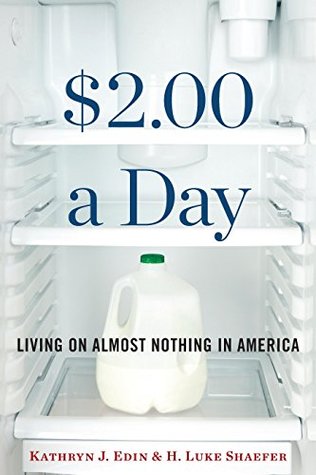More on this book
Community
Kindle Notes & Highlights
in 2011, more than 4 percent of all households with children in the world’s wealthiest nation were living in a poverty so deep that most Americans don’t believe it even exists in this country.
In early 2011, 1.5 million households with roughly 3 million children were surviving on cash incomes of no more than $2 per person, per day in any given month.
That’s about one out of every twenty-five families with children in America.
One way the poor pay for government aid is with their time.
Out of every one hundred Americans, fewer than two get aid from today’s cash welfare program. Just 27 percent of poor families with children participate.
Sometimes evidence, however, doesn’t stand a chance against a compelling narrative.
Although negative racial stereotypes had plagued welfare throughout its existence, the emphasis on race was more widespread and virulent after Reagan turned his focus to the system. His welfare queen soon became deeply ingrained in American culture. She was black, decked out in furs, and driving her Cadillac to the welfare office to pick up her check. None of these stereotypes even came close to reflecting reality, particularly in regard to race.
The real story supported by Ellwood and Bane’s findings was that most families used welfare as a temporary hand up during a crisis or transition.
Americans didn’t hate the poor as much as they hated welfare. In
David Ellwood’s plan would cost a great deal more than the current system, because of its investments in education, training, and the provision of public jobs.


